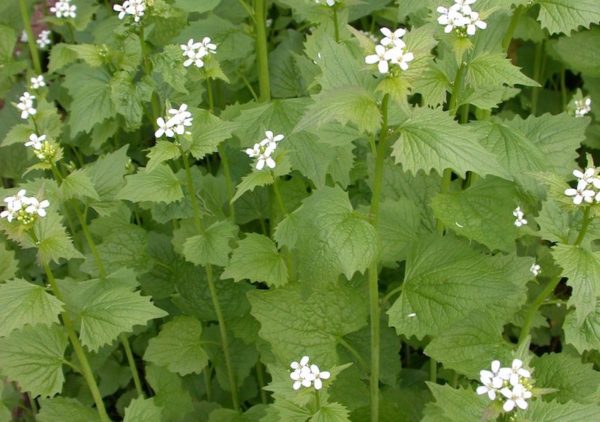Got Garlic Mustard?
Now I am not asking because I am making a sandwich.
The garlic mustard I am talking about is not some artisan condiment; rather it is a noxious weed. Garlic mustard (Alliaria petiolate) is a biennial that grows a leafy rosette in its first year and flowers in its second. The leaves are alternate and somewhat heart-shaped.
Garlic mustard is so called because when its leaves are crushed they smell like…garlic. This helps identify this weed from look-alikes.

Garlic mustard grows in sun or shade. Its roots exude a chemical substance that inhibits the growth of nearby plants. And one plant can produce up to 5000 seeds that remain viable in the soil for up to 5 years. It’s easy to see why garlic mustard is such a problem to control. Large stands of garlic mustard can quickly take over a woodland, choking out natives and wildflowers.
The most effective way to control garlic mustard is by hand pulling as it is flowering – before it sets seed. It is important to grab from the base and remove the entire root; I find that weeding is best done after a rain as things are softer. What about large areas of the weed? Still, hand pulling seems like the right option. Although herbicides can also be used, just make sure that directions are followed. Herbicides will not kill garlic mustard seed which is why hand pulling even after an herbicide application is important. Any plants that are pulled should be bagged and put in the trash as they will continue to flower and set seed. Mowing will not work and can actually be counterproductive. Mowing between May-September can actually spread the ripening seed pods.
Last year I spoke with Ellen Zachos who is a forager and she turned me on to eating a good portion of my garden. You can do the same with garlic mustard. Here is a great link that shares many yummy options on “The Forager’s Feast”

Follow Us!